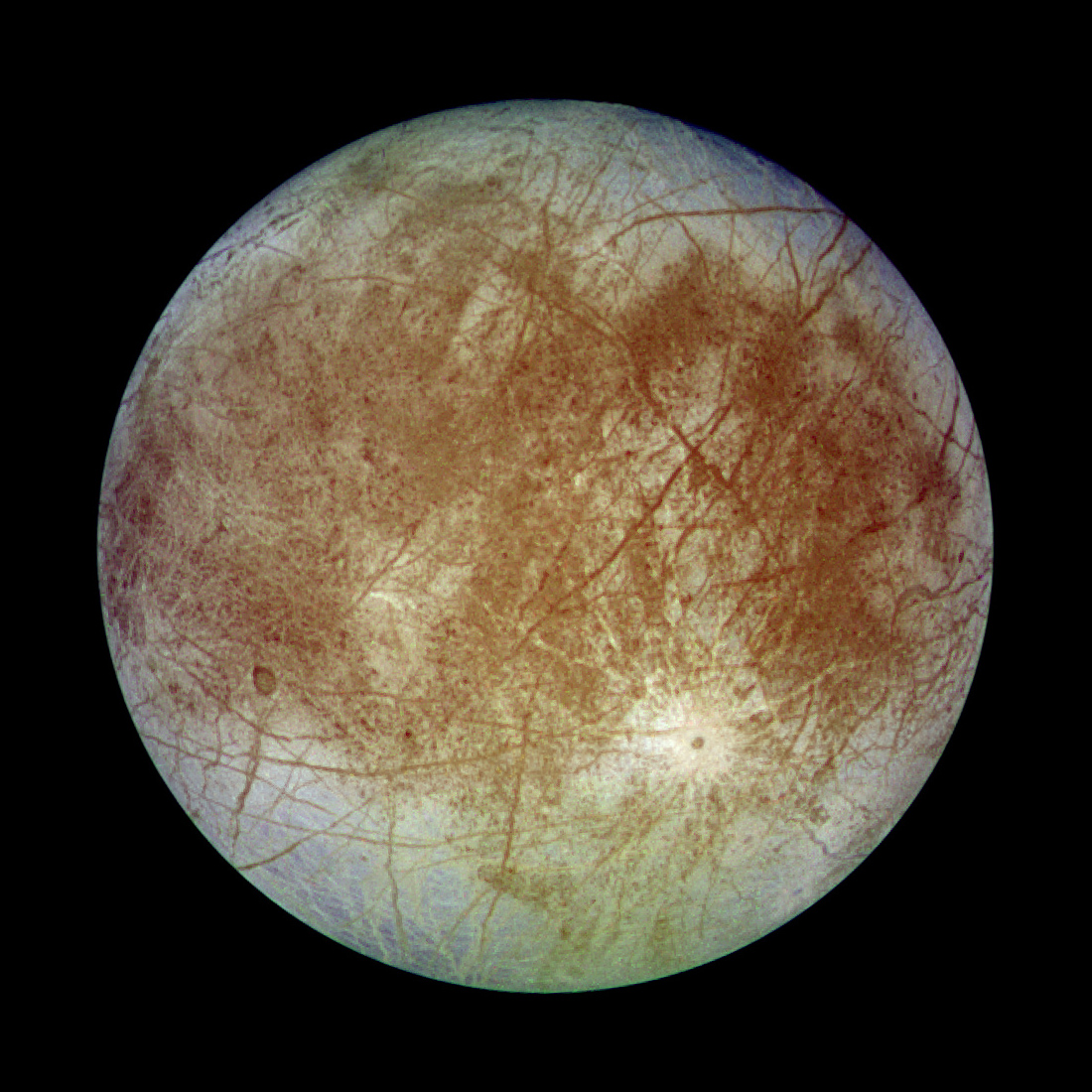Europa is the smallest of Jupiter’s Galilean moons, and the sixth-largest moon in the Solar System. It is also the sixth-closest moon to Jupiter. It was discovered in 1610 by Galileo Galilei and was named after Europa, the Phoenician mother of King Minos of Crete and lover of Zeus (the Greek equivalent of the Roman god Jupiter and the king of the gods).
Europa is considered one of the most promising places in the Solar System to search for evidence of life beyond Earth. The surface of Europa is composed of water ice and is one of the smoothest in the Solar System. The lack of craters and the presence of cracks and streaks suggest that the surface is relatively young.
